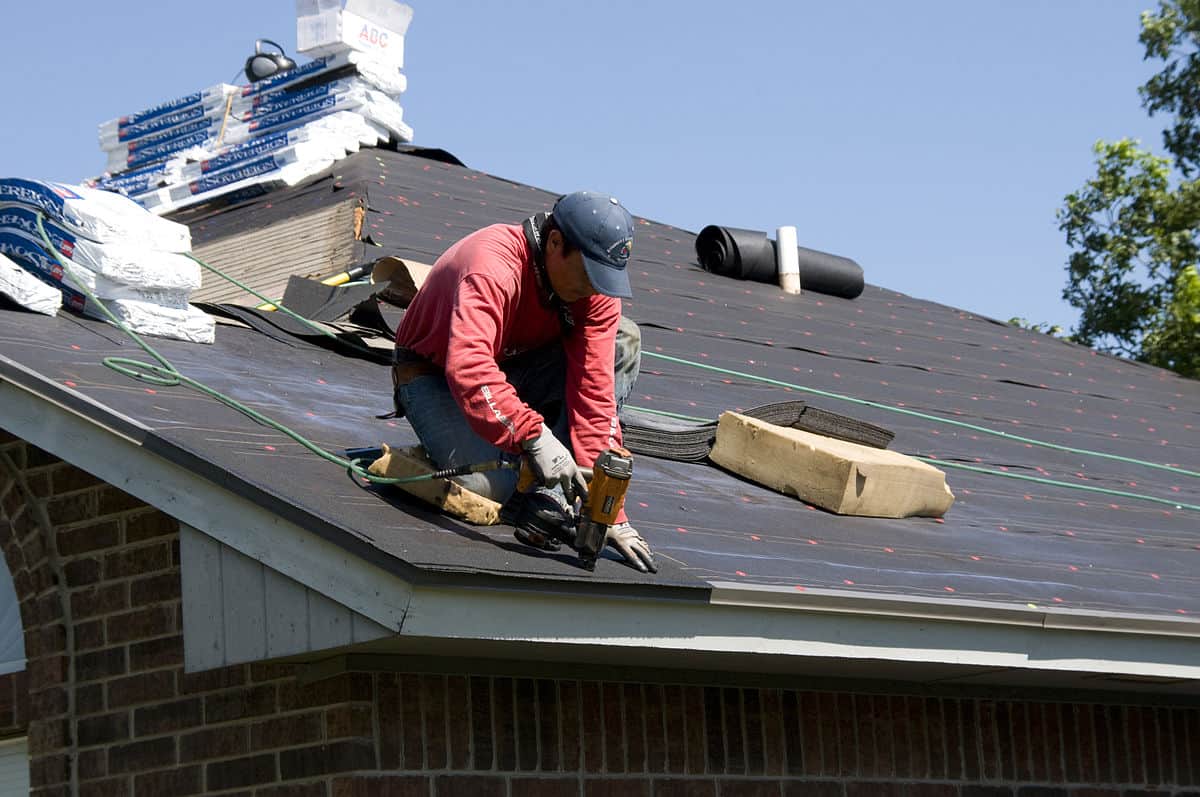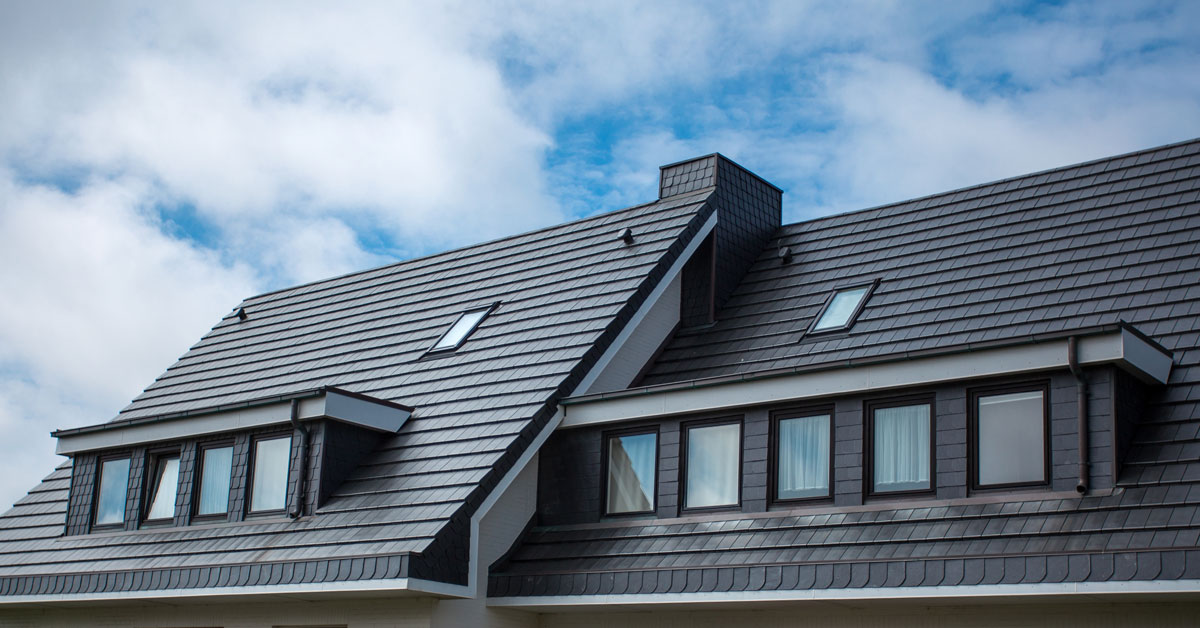Step-by-Step Guide to Discovering the Right Roofing Companies in Gainesville
Step-by-Step Guide to Discovering the Right Roofing Companies in Gainesville
Blog Article
Finest Practices for Ensuring Proper Roof Covering Air Flow
Ensuring appropriate roof covering ventilation is crucial for the longevity and effectiveness of a roof covering system. A balanced intake and exhaust air vent ratio, generally 1:300, plays a pivotal function, with consumption vents ideally positioned at the lower edge of the roof covering for great air access and exhaust vents at the optimal for warm air leave. Regular assessments to recognize clogs and keep clear airflow are extremely important. Maintaining insulation away from vents is critical to protect against air flow restriction. Understanding these foundational aspects establishes the phase for more in-depth understandings right into installation and maintenance techniques that can significantly improve your roof's efficiency.
Understand Ventilation Fundamentals
Effectively recognizing ventilation fundamentals is necessary for making sure the longevity and performance of roof. Efficient ventilation minimizes moisture buildup and temperature extremes in the attic room, both of which can result in significant structural damages gradually. A well-ventilated roof covering aids in preventing common concerns such as mold and mildew growth, wood rot, and ice dams, which can compromise the integrity of the roofing materials and the underlying frameworks.
The primary goal of ventilation is to facilitate the movement of air, permitting a consistent exchange in between the indoor and exterior environments. This equilibrium is attained through a mix of consumption and exhaust vents that collaborate to preserve optimal air movement. Consumption vents, commonly located along the eaves or soffits, permit fresh air to enter the attic room area, while exhaust vents, frequently located at or near the roofing ridge, allow hot, damp air to escape.
Trick elements affecting the efficiency of roof ventilation consist of appropriate positioning, adequate sizing, and making certain that both intake and exhaust vents are unobstructed. Normal assessment and upkeep are essential to recognize potential clogs, damage, or inefficiencies in the ventilation system, therefore protecting the roofing system's performance and resilience.
Kinds Of Roof Vents
Roofing system vents play a crucial duty in maintaining reliable attic room ventilation and, by expansion, the general health and wellness of the roof covering system. Numerous kinds of roofing vents are offered, each with unique benefits customized to particular roof requirements.

Soffit vents are set up under the eaves and work in tandem with roof covering vents to ensure a balanced intake and exhaust system. By permitting cooler air to enter from below, soffit vents facilitate the expulsion of warm air with upper vents. Gable vents, situated on the exterior walls of the attic, deal an additional reliable solution, specifically in homes with gable roof coverings.
Evaluate Your Current Ventilation

Following, take into consideration the age and condition of your roof covering materials and ventilation components. Older systems might not conform with current building ordinance or may have weakened over time, minimizing their performance. Conduct a complete examination to determine any kind of signs of deterioration, such as rust, damage, or spaces that can jeopardize the system's performance.
Furthermore, gauge the attic temperature and moisture degrees. High temperatures and moisture can indicate insufficient ventilation - gainesville fl roofing companies. Use a hygrometer and thermostat to obtain precise analyses, comparing them with outside conditions. Persistent discrepancies suggest possible issues that require attending to.
Installment Best Practices
Reliable installation of roof covering air flow systems is critical for guaranteeing optimal performance and durability. Correct installment starts with comprehending the specific air flow needs of the roof covering and the building it covers. This includes determining the proper ratio of consumption to wear down vents, usually sticking to the 1:300 guideline, which stipulates one square foot of ventilation for every 300 square feet of attic read this article room floor space.

The placement of vents is just as vital. Intake vents must be mounted at the roofing system's lower edge, usually in the soffits, to enable cool air to get in. Exhaust vents, on the various other hand, should be set up near or at the roofing system's peak to facilitate the exit of warm, damp air. This creates a natural air flow that aids keep temperature level and dampness balance within the attic space.
Seal all vent connections diligently to stop air leaks and potential water infiltration. Use high-quality products and adhere to manufacturer standards to make certain toughness and effectiveness. Additionally, incorporating ridge vents with baffles can significantly improve air flow efficiency by avoiding wind-driven rainfall and snow from getting in the attic.
Ultimately, precise installment of roofing air flow systems reduces prospective problems such as mold development, ice dams, and structural damage, making certain the roofing's stability and the building's total health.
Regular Maintenance Tips
Consistency in upkeep practices is essential to guaranteeing the long-term effectiveness of roof air flow systems. During these evaluations, ensure that vents are totally free of particles, nests, and various other obstructions that could impede airflow.
Cleaning up the vents is an additional crucial task. Use a soft brush or a vacuum cleaner to get rid of dust and debris from intake and exhaust vents. Beware not to harm the vent screens or louvers during the procedure. Additionally, evaluate the attic room space for any indications over here of water damage, which could compromise the stability of the roofing system.
Appropriate insulation is equally vital. Make sure that attic room insulation does not obstruct the vents, as this can significantly restrict air movement. Reposition or replace it to keep a reliable obstacle. if any type of insulation has changed or worked out.
Last but not least, change any type of harmed or missing out on elements without delay. Busted vents, broken shingles, or scrubby blinking can all contribute to insufficient air flow and must be resolved without delay. Normal upkeep ensures that the roof ventilation system functions optimally, consequently expanding the lifespan of the roofing system itself.
Conclusion
Guaranteeing correct roofing ventilation is extremely important for preserving the effectiveness and resilience of a roof. Adherence to the 1:300 consumption and exhaust vent proportion, coupled with the critical positioning of vents, is necessary. Regular semiannual examinations, debris cleansing, and making sure insulation does not obstruct airflow are vital practices. Carrying out these ideal practices will certainly promote a well-ventilated roof, therefore mitigating possible concerns associated with moisture build-up and extreme heat, eventually extending the roofing's life expectancy.
A check that balanced consumption and exhaust air vent proportion, typically 1:300, plays a pivotal function, with consumption vents preferably put at the reduced side of the roofing for trendy air entrance and exhaust vents at the optimal for warm air exit. Consumption vents, generally located along the soffits or eaves, permit fresh air to go into the attic room space, while exhaust vents, frequently situated at or near the roofing system ridge, enable warm, damp air to leave.
Soffit vents are mounted under the eaves and job in tandem with roof vents to make certain a balanced consumption and exhaust system. By permitting cooler air to go into from below, soffit vents help with the expulsion of hot air with top vents. Adherence to the 1:300 intake and exhaust vent proportion, coupled with the calculated placement of vents, is important.
Report this page